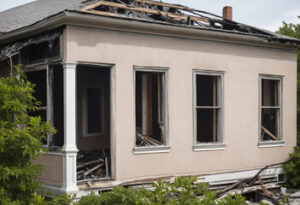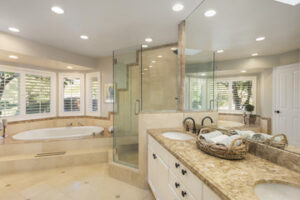A broken garage door poses a safety hazard to your family and possessions. A faulty door also lets in bad weather, bugs, and neighborhood animals.
Some garage door problems are minor and can be solved at home. However, some require professional service. A qualified technician will know the difference between fixing symptoms and addressing the actual problem. Contact Garage Door Repair Peoria AZ now!

The garage door is often one of the first things people notice on a home, so it’s no surprise that it tends to get its fair share of damage. Everything from kids playing basketball in the driveway to cars backing into it can result in dents, scratches, and even caved-in panels. Depending on the extent of the damage, it can either be repaired or replaced.
Keeping your garage doors in good condition is one of the best ways to avoid the need for repair or replacement. It’s recommended that you regularly clean and lubricate them, as this helps prevent excessive wear and tear over time. In addition, a routine inspection will help identify any issues that may arise early so you can address them quickly and efficiently.
Replacing a damaged panel is a relatively simple and rewarding do-it-yourself project. Before you begin, make sure to work safely by disconnecting the opener from the garage door using the emergency release cord and pulling it up manually. Next, position a 2 x 4 or block under the garage door to lift it up and give you space for working. Once you’ve removed the old panel, position a new one and screw it in place by lining up the hinges with the ones on the track assembly.
Whether or not to repair or replace your garage doors depends on several factors, including the extent of the damage and whether the entire panel needs to be replaced or only part of it. Replacing the whole door will cost more than replacing a single panel, so it’s important to assess the situation and decide what the best course of action is for you and your family.
Broken Rollers
Rollers are essential for smooth garage door operation, ensuring easy movement and security. When they are broken, the entire system is jeopardized. In addition to causing noise, a broken roller can also cause the door to lose stability and fall off its track. A professional garage door repair service can evaluate your rollers and replace them if necessary.
The most common sign of a broken roller is when the track looks worn out, with gaps or bends where it meets the next section. Alternatively, the roller itself may look flat or worn out on one end. This indicates that the wheel has lost its metal edge and is creating high friction with the track. This can cause the door to open and close jerkily, increasing stress on other components of the system and potentially shortening their lifespan.
If you notice your garage door vibrating while opening and closing, it is likely time to replace your rollers. This is an indication that the wheels are wearing out, causing the tracks to shift and the garage door to shake. This puts a strain on other parts of the system, requiring immediate attention and possibly shortening the life of those parts as well.
It is important to disconnect the power before beginning any work on the track or rollers. It is also a good idea to have someone to help you, as the rollers are held in place by a bent track, making it difficult to remove and replace them by yourself. Once the track is unlocked, you can use locking pliers to loosen and bend one side of the track forward so that it becomes easier to pop out and then replace the broken roller.
Broken Cables
Garage doors are complicated, and each of the parts is essential to moving the door smoothly. But sometimes one of the most crucial pieces – the cable that runs inside the springs – can break or snap. When this happens, the garage door will no longer be able to move. This puts increased strain on other parts of the system, including the track and rollers. It can also cause the door to droop down or fall, which can be dangerous for anyone in its path. A broken cable should always be repaired promptly to prevent damage and injury.
Signs of a snapped cable include the garage door lifting unevenly, seeming unbalanced or making strange noises. If you notice these signs, you should call a professional immediately. Attempting to fix a snapped cable without proper training and tools can be dangerous for you and your family.
If you decide to repair a snapped cable yourself, make sure to disconnect the power before attempting anything else. You should also take care to carefully inspect the drum and pulley system for signs of wear or obstructions that could have caused the cable to slip off. Once you’ve removed the old cable, carefully wind the new one onto the drum. Make sure it’s evenly and tightly wound, then use winding bars to adjust the tension of the torsion springs and re-check the drum and pulley system for signs that it may have been pulled off.
After the new cable is installed, you can reconnect the power and test your garage door. If you still encounter any issues, you can contact Waypoint Property Inspections East for help with your home inspection in Indianapolis.
Broken Tracks
When a garage door track becomes broken or damaged it can seriously affect the functionality of the entire system. It can even become a safety hazard that can cause injury to someone trying to use the door.
Common causes of a garage door track becoming broken or damaged include accidental damage from a vehicle, improper installation, or even simply mishandling the door. Rough handling can also cause the track to move out of alignment, which makes it difficult or impossible for the door to operate properly.
If you are experiencing any of the above problems, it is important to take action right away. It is also important to note that waiting can lead to more severe problems and could even result in the need for track replacement by a professional.
The first step in repairing a broken or damaged track is to disconnect the door from the opener using the emergency release cord. This will ensure that the door won’t automatically move while you are working on it and prevent any accidents or additional damage to your system.
Once the door has been disconnected, carefully inspect the track for any visible signs of damage or alignment issues. Once you have located the problem area, loosen the bolts connecting the track to the wall and gently tap the track back into alignment with a mallet or hammer. Once the track has been properly straightened, retighten the bolts and test the door to ensure that it is operating smoothly.
If the tracks are heavily dented or damaged it may be necessary to replace them entirely. However, this should only be done by a professional to prevent further damage to the door or safety concerns.
Broken Spring
Your garage door can’t move up and down without a functional spring. The spring counterbalances the panels’ weight to make it easy for the opener to lift them. If the springs break, you’ll hear a loud snapping noise or see the panels become crooked because they no longer have a balanced weight distribution.
A broken extension or torsion spring is the most dangerous because the released tension has to go somewhere and could hit anything nearby, including people, pets or cars. The best way to prevent a broken spring is to have a professional garage door repair company replace the springs before they break.
Homeowners who choose to try and fix the broken spring on their own will need to locate a new spring, purchase the proper tools (there are no safe replacements for torsion springs) and then remove the old spring and install the new one. A professional can quickly and safely perform this repair and test the springs to ensure they’re working correctly.
It’s possible that homeowners can change their own springs, but it’s a very dangerous job for anyone but a professional. Changing torsion springs requires a lot of stored energy, and you can lose control if one of the winding bars slips out. If that happens, the spring will fling out like a spear and could hit you in the head. It’s best to hire a professional to save yourself the potential danger and cost of a head injury.








